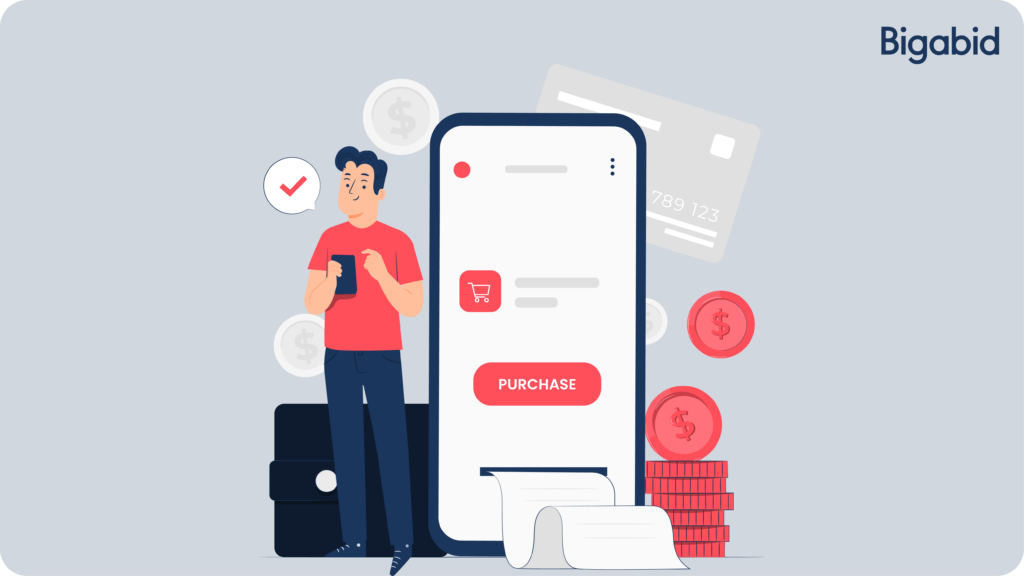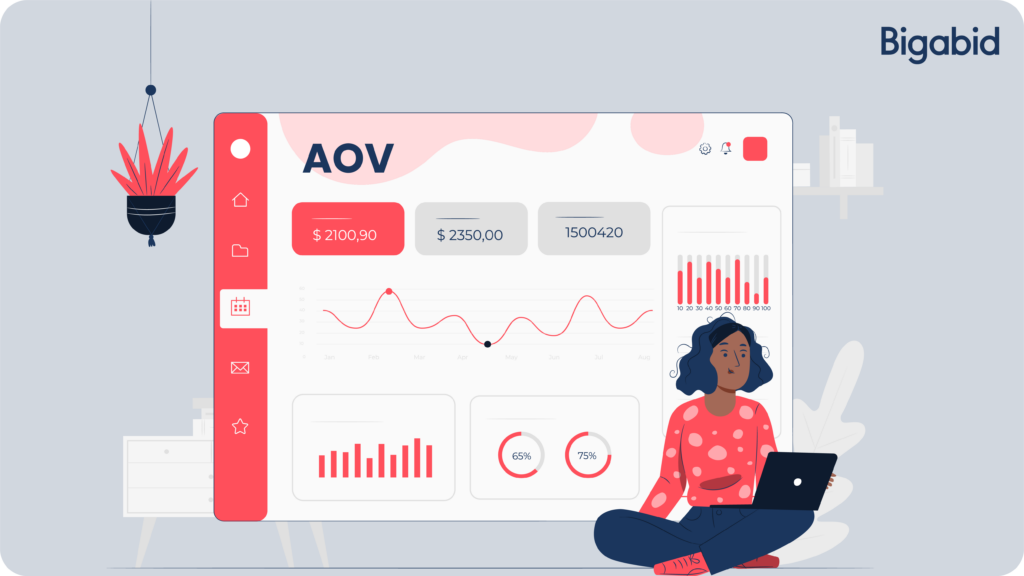
Total Installs
This metric not only indicates your app’s popularity but also offers insights into its user reach, making it a crucial measure for app success. Let’s delve into why it matters.
When evaluating total installs, it’s vital to assess both the quantity and quality of downloads. A high install count signifies initial interest in your app. Equally important are considerations like user retention, engagement, and lifetime value to comprehensively evaluate your app’s success.

App Revenue:
Generate revenue from transactions, subscriptions, ads, and diverse monetization methods in your mobile app. Consider an online marketplace for trendy home decor and accessories. As direct sales via their app rise, it indicates more customers prefer mobile purchases. Analyzing this data reveals top-selling items, allowing for improved product displays and promotions on the app.

User ID’s
Insights into active mobile app users are vital for merchants. These engaged individuals, who frequently make purchases and browse products, represent potential loyal customers. Understanding active users enables effective implementation of personalized recommendations and targeted marketing strategies.
A user session, defining a single website visit encompassing all interactions from arrival to departure, provides valuable data for merchants. Analysis of this information allows optimization of platforms and tailored offerings to meet customer requirements. For example, an online fashion retailer monitoring user sessions on their mobile app discovers that many visitors explore various product categories but abandon carts before purchase. Consequently, they enhance the homepage to feature popular products and improve navigation, simplifying the search process for visitors.

Retention Rate, Measuring User Loyalty and Repeat Visits
Customer loyalty and satisfaction are crucial for any business. The retention rate is a key indicator of customer loyalty, showing the percentage of customers who stick with your brand. A high retention rate signals happy customers and repeat business, while a low rate could mean customers are unhappy or disconnected.
Consider an online cosmetics seller tracking their retention rate. Out of 1,000 customers who made a purchase in January, 800 came back for more in the following months, resulting in an impressive 80% retention rate.
These insights can shape personalized email campaigns for current customers, showing appreciation for their support and offering exclusive discounts to encourage repeat purchases.

Order ID
Order IDs serve as unique identifiers for transactions within a mobile app. These digital fingerprints aid developers and analysts in monitoring and evaluating specific orders through various metrics, enhancing tracking efficiency.
Why Order IDs Matter:
- Granular Tracking: This enables detailed tracking of individual transactions to gain insights into the customer journey and enhance the purchasing process.
- Attribution Analysis: Helps attribute revenue and conversions to specific marketing efforts, optimizing budget allocation.
- User Behavior Analysis: Provides profound insights into user behavior for personalized offerings and increased user engagement.
- Performance Monitoring: Enables real-time tracking of transactional performance for swift issue resolution and improved user experience.
Utilizing Order IDs for Informed Decisions:
- Optimized Product Development: Focus on improvements informed by popular products and user input to deliver a competitive app experience.
- Revenue Optimization: Deploy pricing tactics and promotions guided by transactional insights to boost revenue streams.
- Enhanced User Experience: Streamline the buying journey and elevate satisfaction with user-centered design, nurturing long-term success and retention.
- Personalized Marketing: Customize marketing strategies according to user preferences and previous purchases to drive engagement and loyalty.
Here are some key aspects to consider when evaluating total installs:
- App Reach and Market Penetration: Total installs offer insights into your app’s reach within your desired audience. Examining installation metrics across various demographics, geographic regions, and user segments can pinpoint areas for expanding your app’s market presence and attracting new user bases.
- Marketing Effectiveness Assessment: Monitoring fluctuations in total installs can assess the impact of your marketing campaigns and promotional tactics. By linking installation data to specific marketing endeavors, you can determine the most effective channels and strategies that offer the best return on investment (ROI), enabling you to refine your marketing approach accordingly.
- App Initial Popularity: The total number of installs acts as a gauge of your app’s initial appeal. A substantial installation count can draw in more users, boosting your app’s visibility on app stores and potentially fostering organic growth through word-of-mouth referrals and positive reviews.
In essence, total installations offer key insights into an app’s popularity, market penetration, marketing efficacy, acquisition expenses, and user interactions. App proprietors can leverage this data to make informed choices, enhancing their app’s functionality and fostering success.

Average Order Value
Average Order Value (AOV) is not merely a statistic; it serves as the cornerstone of success for online retailers. Discover why AOV holds paramount importance in their operations.
- Enhancing User Experience: Leveraging AOV insights to craft personalized experiences that guide users towards higher-value transactions, thereby strengthening loyalty and investment.
- Assessing Marketing Impact: Monitoring AOV fluctuations to gauge the effectiveness of marketing initiatives, enabling the refinement of strategies that drive transactions of higher value.
- Tailoring Customer Interactions: Implementing AOV-driven segmentation to tailor marketing campaigns for individual users, fostering loyalty and encouraging repeat business.
- Assessing Profitability: By examining the Average Order Value (AOV) against operational costs, merchants gain valuable insights into their mobile app’s profitability.
- Boosting Revenue: Utilizing Average Order Value (AOV) to pinpoint opportunities for boosting user spending, whether through bundled offers or upselling strategies, to maximize profits.

Push Notifications
Analyzing push notification data is crucial for evaluating communication strategies and making informed decisions regarding future campaigns.
- Push Notifications Sent: This represents the overall count of push notifications dispatched to users’ devices during a set period. It offers valuable insights into the merchant’s communication endeavors and the quantity of messages reaching the audience.
- Push Notifications Opened: This tracks the count of opened push notifications, reflecting the engagement and interest sparked by the messages. Consequently, it empowers merchants to assess the efficacy of their content and timing strategies.
- Push Notifications Received: This signifies the proportion of push notifications effectively delivered to users’ devices and displayed on their screens. It considers elements like device compatibility, network connectivity, and user preferences. Hence, it offers valuable insights into the outreach and dependability of the communication channel.
Effective Methods to Boost User Engagement
In the fiercely competitive marketing landscape of today, user engagement stands as the bedrock of triumph. Harnessing the potential of data-driven analytics can reveal profound insights to enhance engagement and bolster retention.
Personalized Recommendations:
- Relevance: Tailored recommendations heighten user engagement by offering content, products, or services pertinent to the individual user. This tailored approach boosts the chances of users interacting with the app and exploring suggested items, resulting in increased engagement and retention rates.
- Data Utilization: Utilizing data-driven analytics empowers app developers to collect and analyze browsing history, purchase behavior, and preferences. By harnessing this data, developers can craft personalized recommendations customized to each user’s interests and behavioral patterns.
Push Notifications Optimization:
- Segmentation: Leveraging data-driven analytics empowers developers to segment users according to demographics, behavior, preferences, and other pertinent criteria. By categorizing users into specific groups, developers can customize push notifications. Consequently, notifications become more pertinent and captivating for each segment, thereby enhancing engagement prospects.
- Timing and Frequency: Analytics unveil the best times and frequencies for dispatching push notifications to boost engagement. By scrutinizing users’ peak activity periods in the app or moments when they are receptive to alerts, developers can strategically time notifications to captivate users without inundating them.
- Content Personalization: By harnessing user data, developers have the ability to tailor the content of push notifications. Aligning push notifications with the unique interests, preferences, and behavior of each user is key. Crafting personalized messages that truly connect with individual users enables developers to enhance the impact of push notifications and boost engagement rates.
Conclusion
To excel in refining your product lineup, perfecting marketing strategies, or enhancing user experience, embracing data-driven decision-making is paramount for sustained success. Bigabid’s revolutionary AI processes over 100TB of data daily, generating millions of real-time ad recommendations. Please reach out to ensure your decisions are driven by data!







